

 |
Ceramic Figure. This hollow anthropomorphic ceramic figure is in a position surprisingly found in many monuments and vessels from this period. Early Formative Tlatilco, Central Mexico. |
| |
This Ceramic Vessel is in the shape of a caiman. The depiction of this alligator-like reptile is in an "Olmec" style, with a distinctive "flame eyebrow" and U-shaped jaw row. Early Formative Tlapacoya, Central Mexico. |
 |
The shape of this Double-Spouted Ceramic Vessel is typical of Central and West Mexico during the formative period. Along with "stirrup-spouted" vessels, it is reminiscent of bottle shapes found in South America, possibly indicating some trans-continental contact occurring during the formative period through West Mexico. |
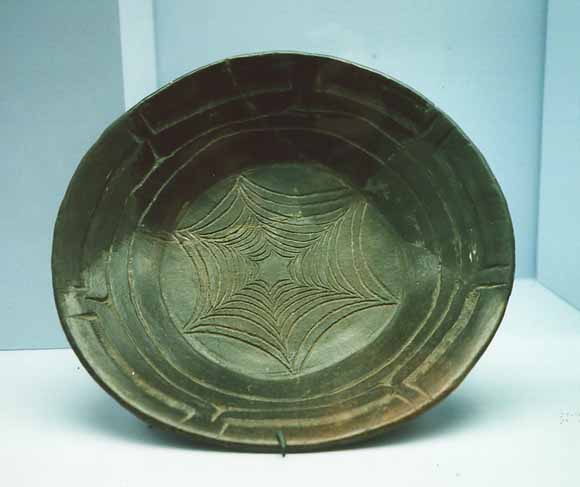 |
This plate from Tlatilco is decorated with the "Double-Line-Break" motif along its rim (which becomes very common during the Middle Formative) and an incised bottom. |
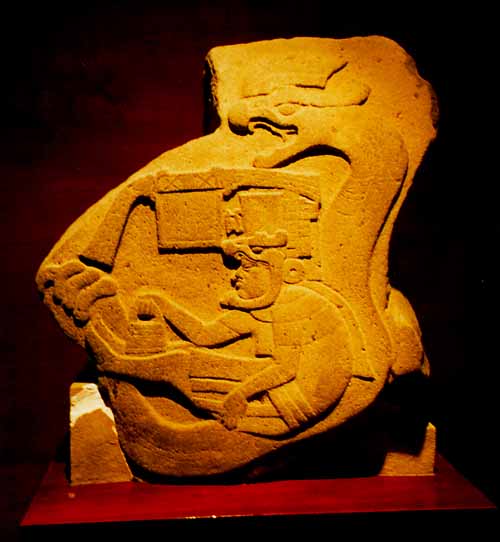 |
La Venta Monument 19. This bas-relief carving depicts a person seated within the curve of a serpent's body. The man is dressed with the same insignia that marks the serpent. Two birds flank a panel that is now blank, but which may have had markings in the past. This monument is similar in theme to other Olmec monuments which depict a person emerging from a zoomorphic cave or niche. |
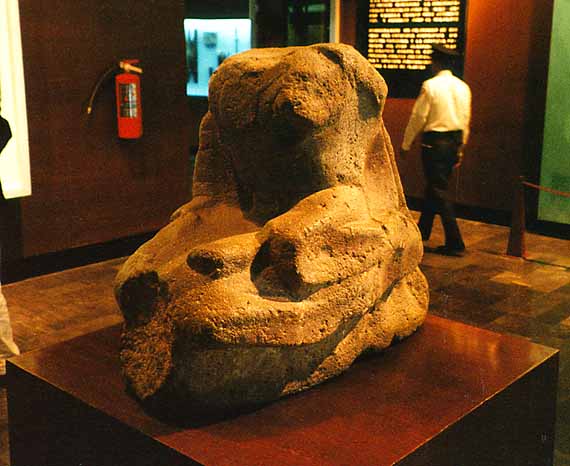 |
Tenochtitlan Monument 1. Not to be confused with the Aztec capital, this monument from the formative period gulf coast site was used by Matthew Stirling to explain the were-jaguar phenomena in Olmec art. When he looked at this monument, he saw a human coupling with a jaguar. Other authors see two humans. I suggest a visit to the museum to see for yourself. |
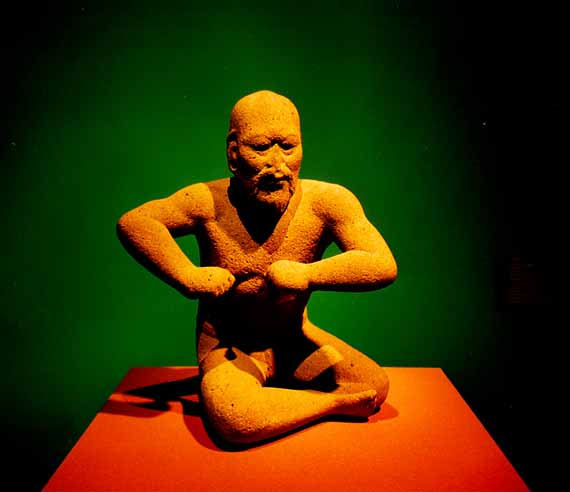 |
Antonio Plaza Monument 1. Nicknamed "The Wrestler", this carved basalt figure was discovered by a campesino in 1933 near the town of Santa María Uxpanapa, now the town of Antonio Plaza, Veracruz. It is in excellent condition, with only a little damage to its nose. |
| |
Chalcatzingo Monument 2. Nicknamed the "Marching Olmecs", the original monument is located on a large boulder at the site of Chalcatzingo in Morelos. This is a plaster cast of the monument made in the 1950's. It depicts two costumed individuals approaching a reclined figure, and a third apparently walking away. (See Chalcatzingo). |
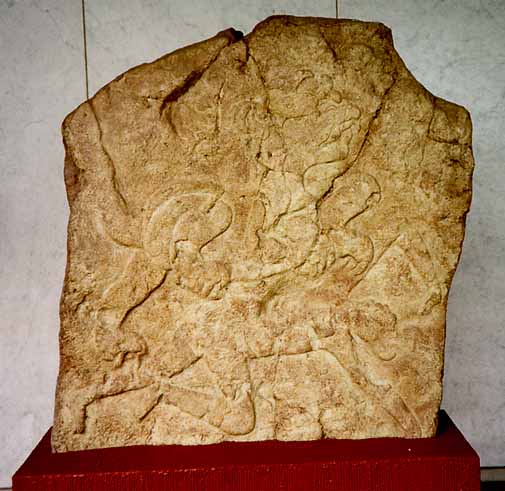 |
Portion of Chalcatzingo Monument 4. This is another plaster cast of one of Chalcatzingo's monuments. The original depicts two ferocious felines dominating two humans. The cast located in the central courtyard of the National Museum shows only one of these encounters. |
Back to the |